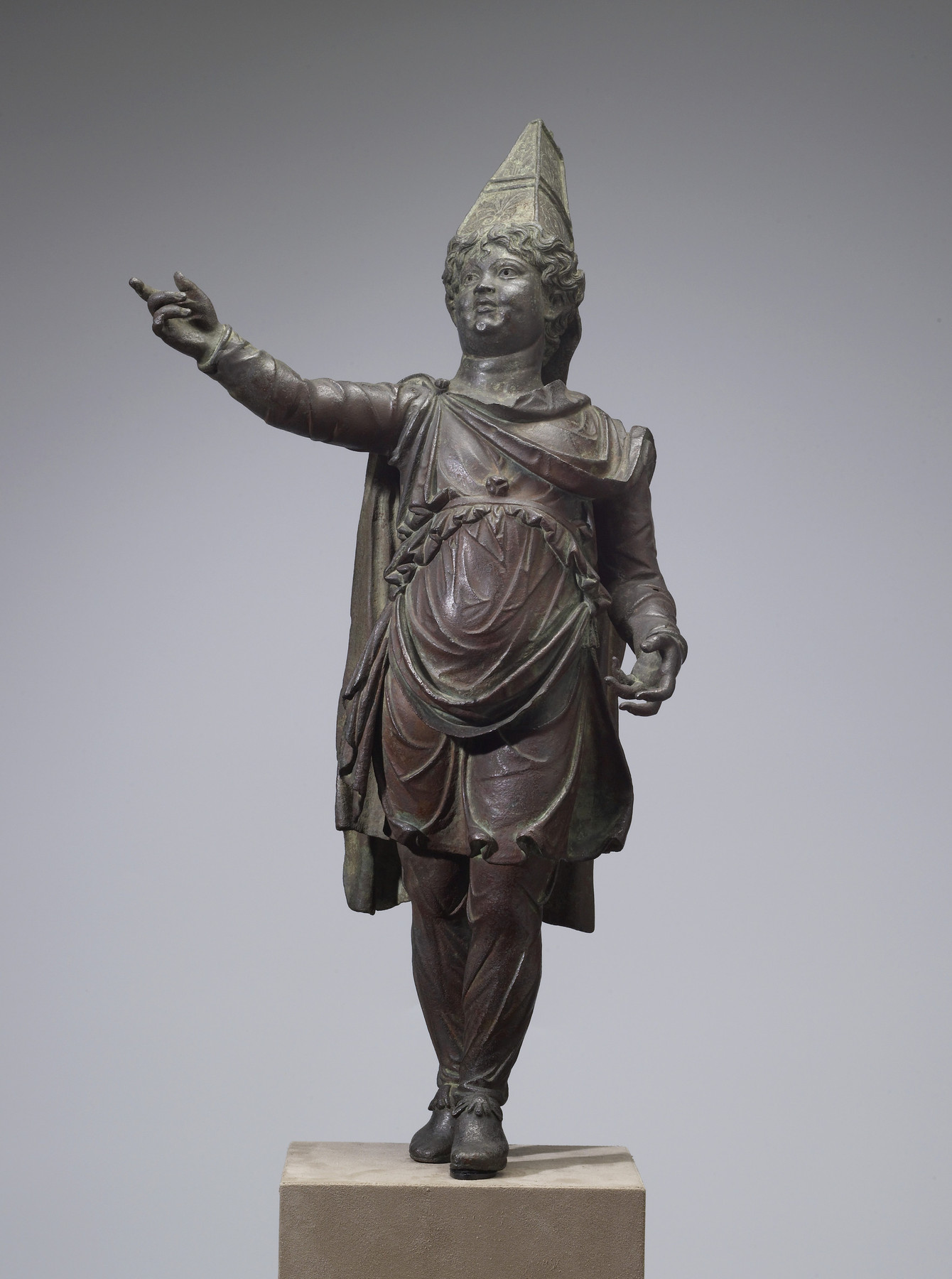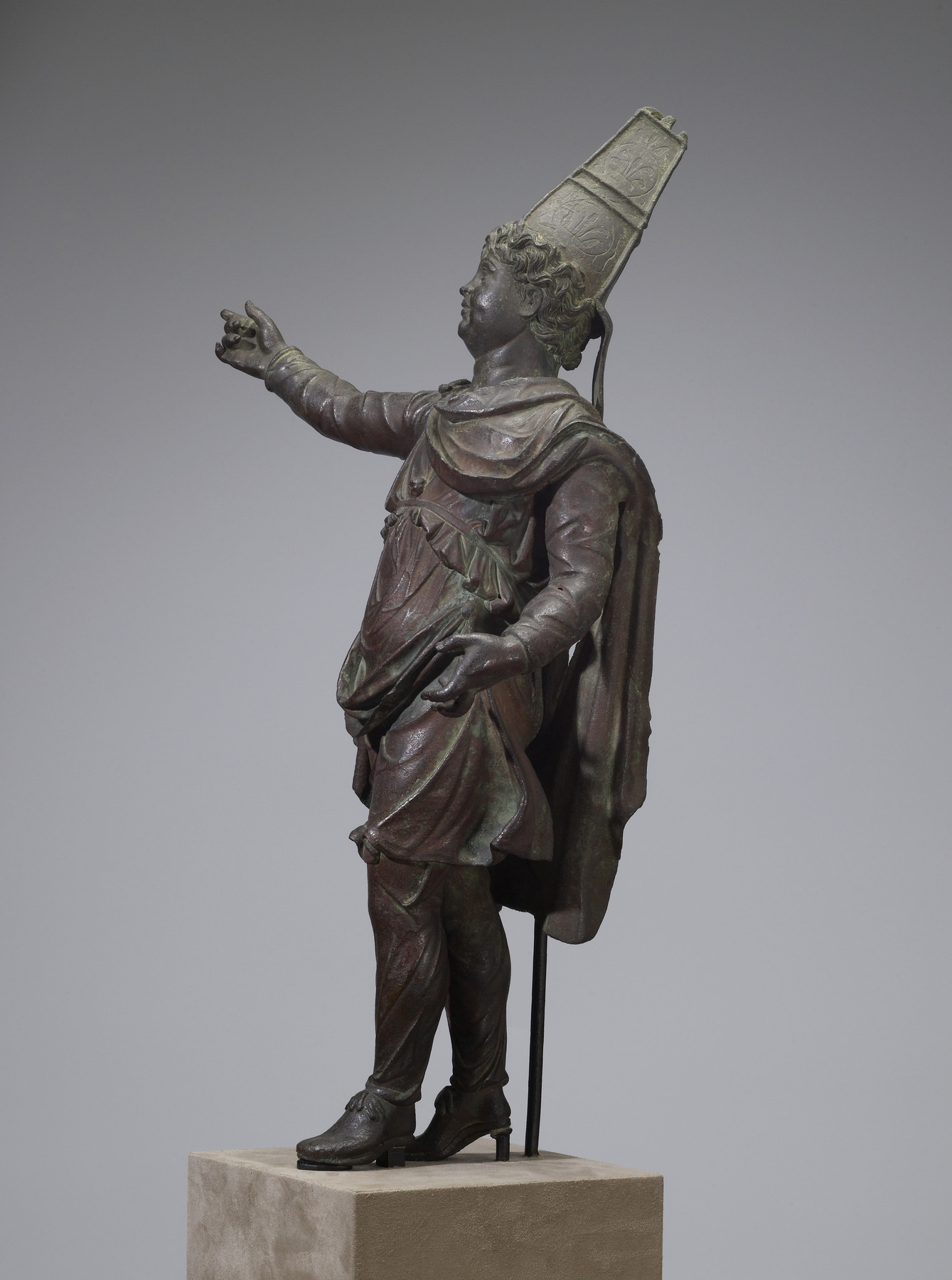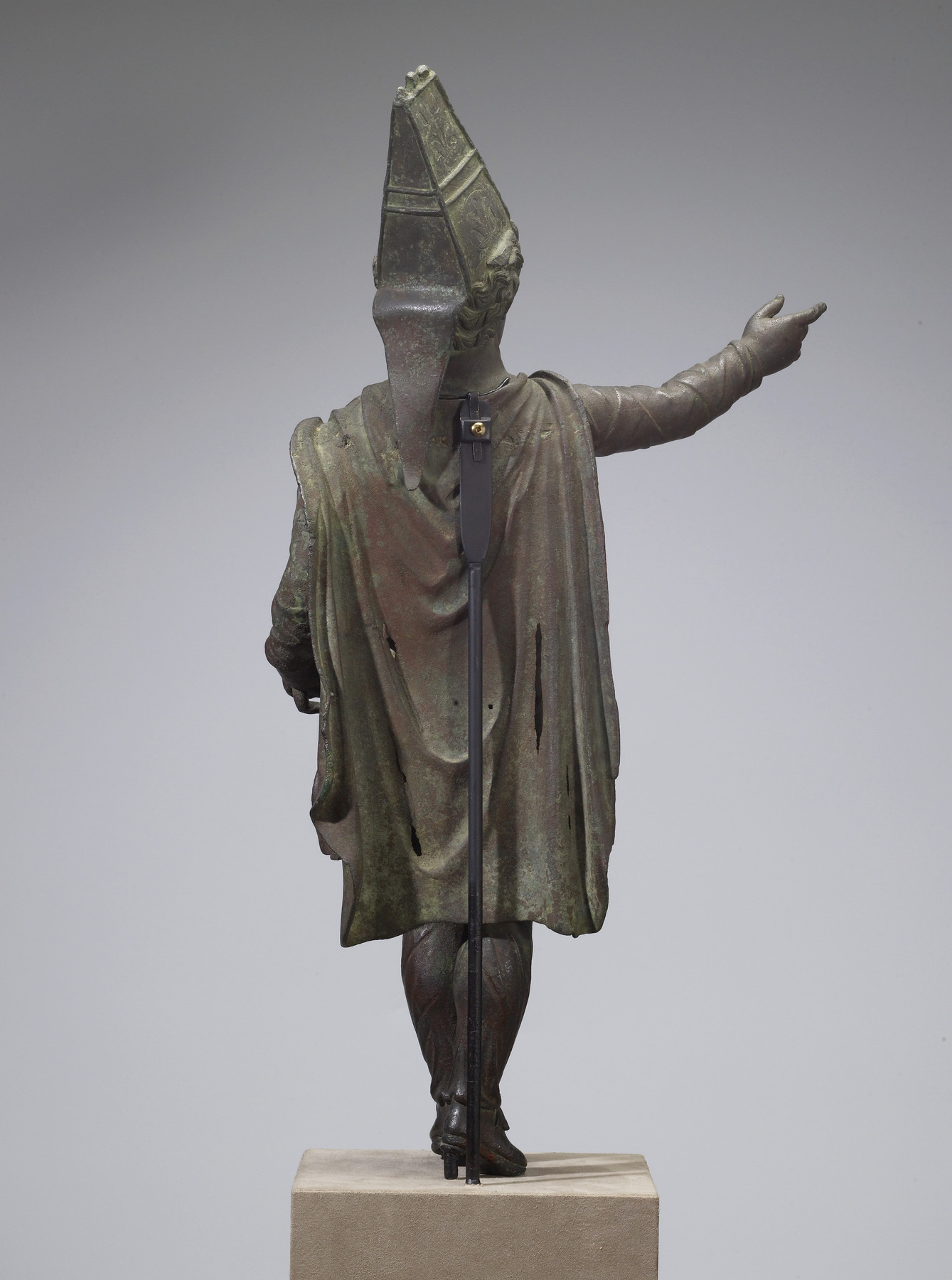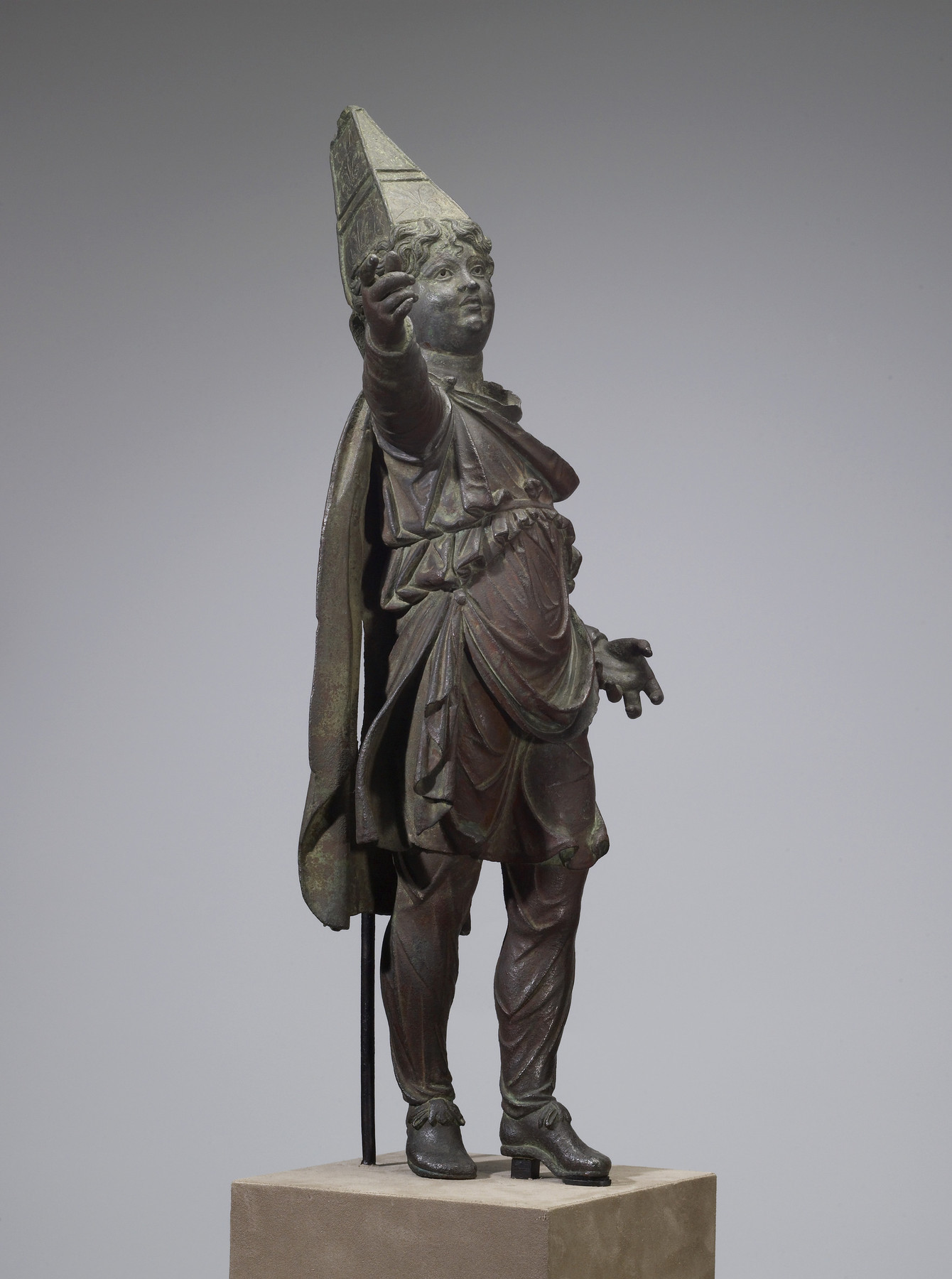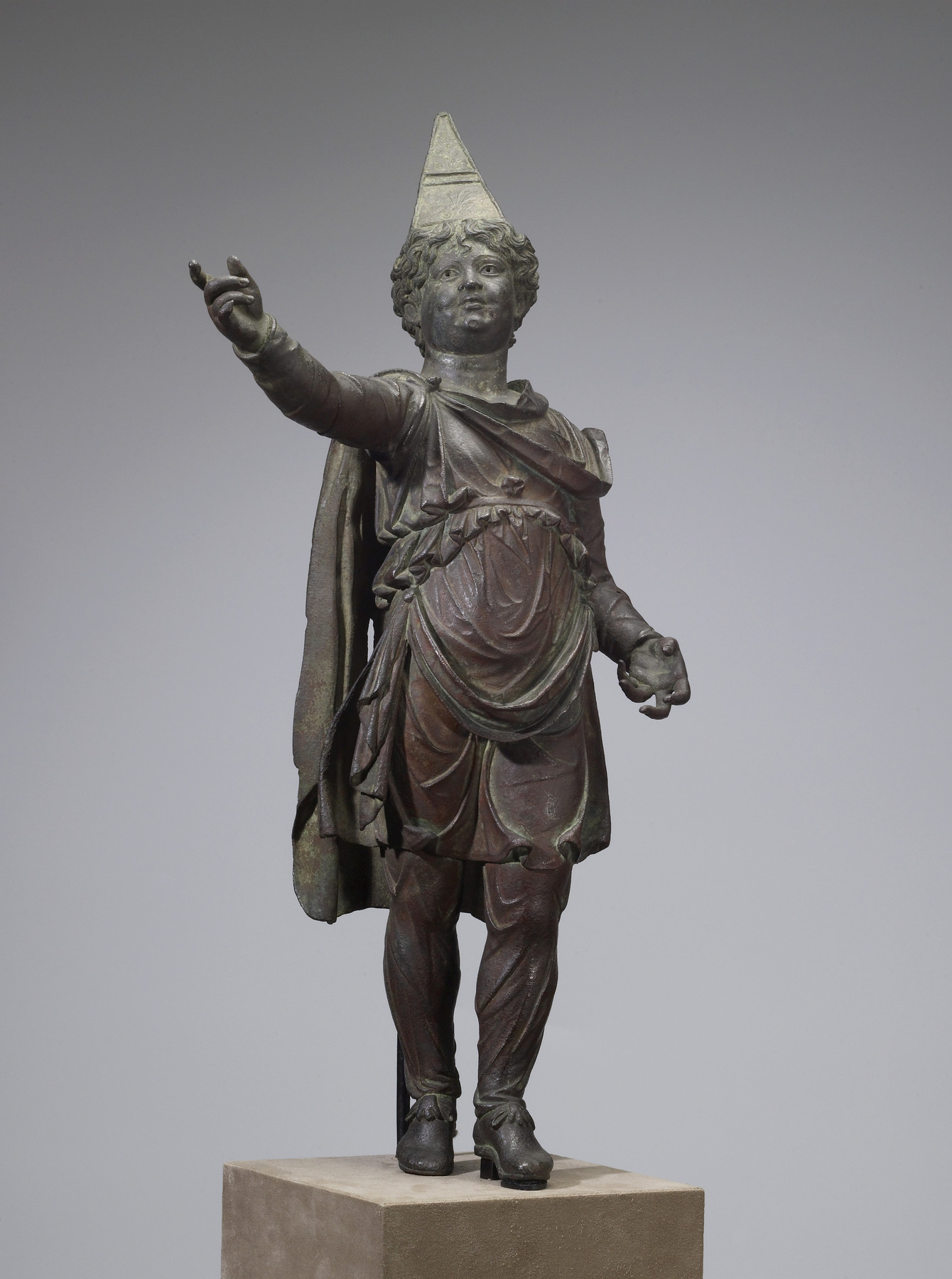Deity or Genius of the Eastern Provinces
Many religions were syncretistic, meaning that as they grew and came into contact with other religions, they adopted new beliefs and modified their practices to reflect their changing environment. Both Greek and Roman religious beliefs were deeply influenced by the so-called mystery religions of the East, including the Egyptian cult of Isis, which revealed beliefs and practices to the initiated that remained unexplained, or mysterious, to the uninitiated. Most popular Roman cults had associations with these mystery religions and included the prospect of an afterlife.
Although this figure was found in Egypt, the elaborate costume and headdress are similar to images from southeastern Anatolia and Armenia. Female figures in the same costume appeared as personifications of Asia and Armenia on monuments in Rome, suggesting that the boy represents the genius, or spirit, of one of these eastern provinces.
Provenance
Provenance (from the French provenir, 'to come from/forth') is the chronology of the ownership, custody, or location of a historical object. Learn more about provenance at the Walters.
Dikran Kelekian, New York and Paris [date and mode of acquisition unknown] [as "one of two figures found near Suez"]; Henry Walters, Baltimore, 1915, by purchase; Walters Art Museum, 1931, by bequest.
Exhibitions
| 2006-2007 | Cleopatra und die Caesaren. Bucerius Kunst Forum, Hamburg. |
| 1996 | Fire of Hephaistos: Large Classical Bronzes from North American Collections. Harvard Art Museums, Cambridge; Toledo Museum of Art, Toledo; Tampa Museum of Art, Tampa. |
| 1988-1989 | The Gods Delight: The Human Figure in Classical Bronze. The Cleveland Museum of Art, Cleveland. |
Conservation
| Date | Description | Narrative |
|---|---|---|
| 2/28/1967 | Treatment | cleaned; loss compensation |
| 10/6/1988 | Treatment | cleaned; loss compensation; other |
| 10/1/2006 | Treatment | stabilized; other |
| 2/8/2007 | Examination | examined for loan |
| 2/21/2007 | Examination | examined for condition |
Measurements
H: 24 1/2 x W: 13 1/8 x D: 8 1/8 in. (62.3 x 33.4 x 20.6 cm); mount: H: 6 7/16 x W: 7 7/16 x D: 8 7/16 in. (16.4 x 18.9 x 21.4 cm)
Credit Line
Acquired by Henry Walters, 1915
Location in Museum
Accession Number
In libraries, galleries, museums, and archives, an accession number is a unique identifier assigned to each object in the collection.
In libraries, galleries, museums, and archives, an accession number is a unique identifier assigned to each object in the collection.
54.1330

